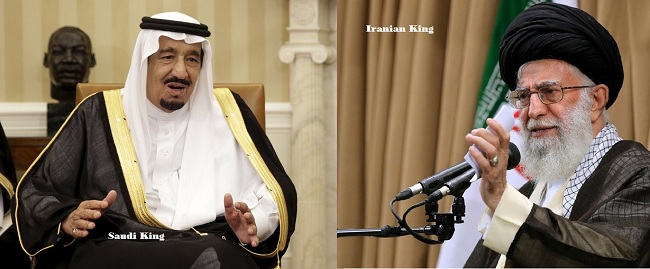The Differences Between Shia And Sunni Muslims
Saudi Arabia severed all diplomatic ties with Iran on Sunday. On Monday, Saudi Arabia moved to cut off all commercial ties, saying it would ban its citizens from traveling to Iran.
“The move comes after Iranian protesters attacked the Saudi embassy in Tehran, ransacking and setting fire to the building in retaliation for Saudi Arabia’s execution of a prominent Shiite cleric and 46 others on Saturday,” Business Insider’s Natasha Bertrand reports.
Notably, Saudi Arabia is governed by a Sunni Islamic government, while the majority of Iranians are Shiite Muslims, also known as Shia.
Other countries that cut ties with Iran on Monday – Bahrain, Sudan, and the United Arab Emirates – are ruled by Sunni governments.
The conflicts between Shia and Sunni Muslims go back to the seventh century and the death of the Prophet Muhammad.
Yet a spotlight has been shone recently on the differences between the two branches of the religion as the number of clashes between both groups has intensified.
The vast majority of the 1.6 billion Muslims in the world are Sunni, according to a 2009 study by the Pew Research center.
Between 10% and 13% are Shia Muslims, and 87% to 90% are Sunni Muslims. Sunni Muslims are also present in more countries and regions throughout the world, whereas most Shia Muslims live in four countries: Iran, Pakistan, India, and Iraq.
The separation of the two groups began after the death of the Prophet Muhammad. The majority believed that his rightful successor was his father-in-law and close friend, Abu Bakr, but a small group believed the Prophet Muhammad’s successor should be Ali ibn Abi Talib, his cousin and son-in-law and father of his grandchildren.
The Sunni majority got its way, as Abu Bakr became the first Muslim caliph and successor of the prophet. Although the divide was at first mostly political, as the minority group was a faction supporting the power of Ali, over time, the divide evolved into a religious movement.
One of the most crucial differences between Shia and Sunni Muslims is the importance that the Shiites give to Ali, whom the Sunni do not recognize as being the prophet’s rightful successor.
One of the most important dates for Shia Muslims is the 10th day of the holy month of Muharram (the first month in the Islamic lunar calendar). Shia Muslims celebrate the anniversary of the death of Husayn ibn Ali, the grandson of the Prophet Muhammad and son of Ali.
The occasion of “collective atonement through lamentation and self-flagellation” is called Ashoura. This practice is particular to the Shiites and often draws criticism and protests from Sunnis who do not celebrate that day nor view it as important.
Both groups, however, agree that Muhammad is God’s messenger and follow the five ritualistic pillars of Islam, which include fasting during Ramadan, five daily prayers, and the Hajj, an annual pilgrimage to Mecca.
They also both share the holy book of the Quran. The primary difference in practice comes in that Sunni Muslims mainly rely on the Sunnah, a record of the teachings and sayings of the Prophet Muhammad to guide their actions while the Shiites more heavily on their ayatollahs, whom they see as a sign of God on earth.
Although many Shia and Sunni Muslims cohabit peacefully, a Pew Research Center survey from 2012 shows that 40% of Sunni Muslims from the Middle East and North Africa do not accept Shias as fellow Muslims.
The conflicts in Iraq and Syria also show a divide between the two, as many Sunni men have joined rebel groups, while men from the Shia community are most often fighting for or with government forces, the BBC reports.




